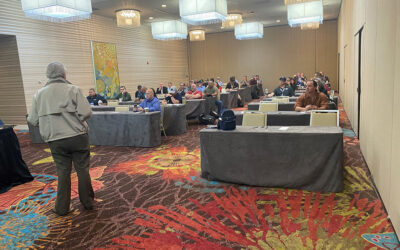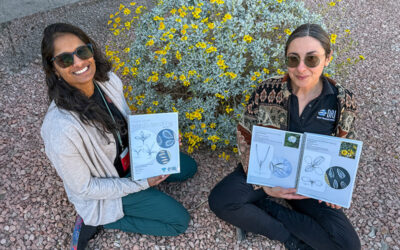DRI researchers are examining the potential for climate intervention techniques to help cool communities – and the planet
Disastrous wildfires and prolonged droughts; stronger hurricanes and cyclones; severe flooding and sea level rise: these are just some of the impacts of a warming climate already occurring all around us. Scientists warn that climate change will continue to increase the frequency and intensity of extreme weather events, with impacts ranging from flooded communities and ocean acidification to food shortages.
To prevent the worst climate change impacts, experts say that humanity needs to rein in global carbon emissions and limit planetary warming to 1.5 degrees Celsius above pre-industrial levels. Crossing this seemingly minor threshold could mean a world without coral reefs, a meter in sea-level rise, and frequent ice-less summers in the Arctic. More than 100 countries have committed to this goal by signing the international climate compact, the Paris Agreement, but studies now show that this threshold is likely to be surpassed within the next decade.
With governments struggling to effectively reduce emissions of planet-warming greenhouse gases, some scientists have proposed exploring ways to actively cool the planet. Sometimes referred to as “geoengineering” or “climate engineering,” these methods seek to enhance the atmosphere’s natural ability to reflect solar radiation back into space, remove greenhouse gases from the atmosphere, or release some of the energy heating up the planet.
“Once we reach the threshold laid out in the Paris Agreement, we’re in a more dangerous climate situation,” says David Mitchell, Ph.D., an atmospheric scientist at DRI. “There are feedback cycles in the climate system that could potentially guarantee the world will get warmer, and if so, it would be hard to get back to a more stable climate at that point. That’s the rationale for climate intervention research.”
Mitchell is part of a team of DRI researchers examining the potential for climate intervention strategies to reduce global warming impacts. The two-year project, “Local to Global Approaches to Mitigate Near-Term Climate Impacts,” relies on computer simulations and data analysis, rather than real-world experiments, and is expected to wrap up by September 2024. The research includes climate intervention strategies that operate at different scales, from increasing the reflectivity of rooftops to cool urban communities, to the potential for thinning cirrus clouds in the polar regions to decrease temperatures globally.
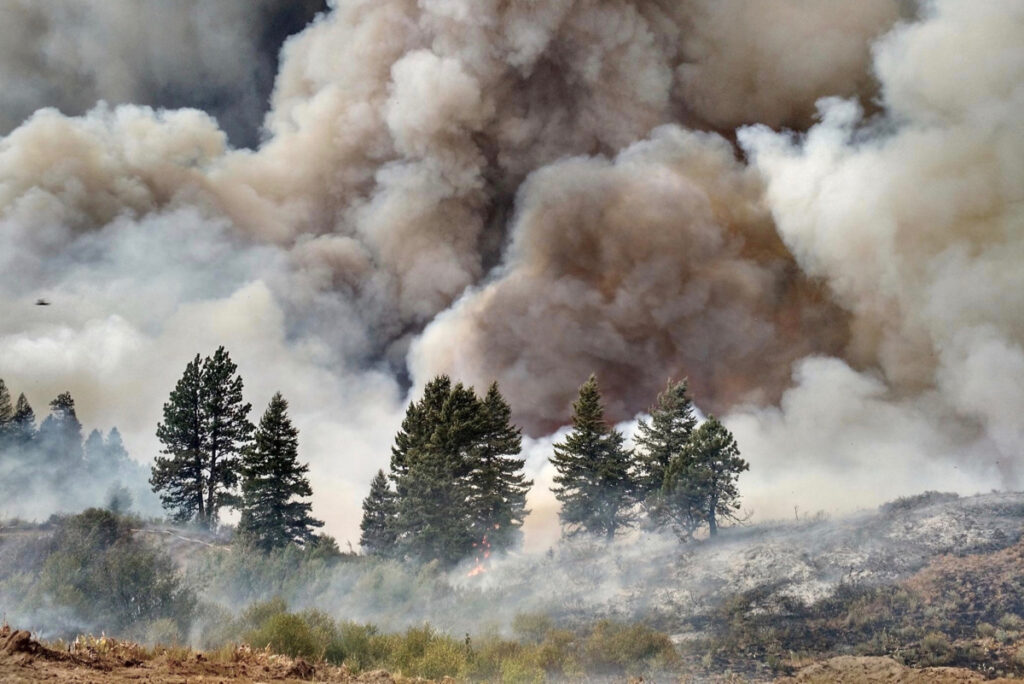
Large, severe wildfires are only one impact of a changing climate in the Western U.S.
Credit: DRI
Cirrus cloud thinning
Cirrus-cloud thinning (CCT) is an idea first proposed in 2009 by Mitchell and William Finnigan, in a ground-breaking study published in Environmental Research Letters. Cirrus clouds are wispy, high-altitude clouds that occur around the world. Unlike other clouds, they have an overall warming effect on the climate, trapping thermal radiation near the surface that outweighs the solar radiation they reflect.
Thinning the clouds would allow more heat to escape Earth’s atmosphere, like cracking the windows in a car on a sunny day. This involves using cloud-seeding strategies much like the ones already commonly used around the world to increase precipitation, whereby dust is released into targeted clouds to facilitate ice formation. These dust particles form the nucleus of an ice crystal in a cloud, which can pull together tiny water droplets to form larger, heavier ice crystals that gravity can bring to Earth’s surface. This is the natural phenomenon that produces all precipitation, but for decades, scientists have used this process to supplement natural rain and snowfall. By converting some of the moisture in the cloud into precipitation, the remaining cloud is thinner, trapping less heat below.
There are a few differences between the cloud-seeding now occurring and proposals for cirrus cloud-thinning. One is the use of a different compound as the introduced dust particle. Traditional cloud-seeding often uses silver iodide (AgI), whereas Mitchell says that bismuth tri-iodide (BiI3) would effectively target cirrus clouds without impacting other clouds. This has to do with the temperature that each compound is most effective at producing ice nucleation. Cirrus cloud-thinning would be most effective at reducing global temperatures if directed to the polar regions when there is little sunlight, because this would maximize the amount of heat released. In fact, one preliminary study has shown that this strategy could cool the planet by about 1.4 degrees Celsius – enough to cancel out the current global impact of all greenhouse gases produced by industrialization.
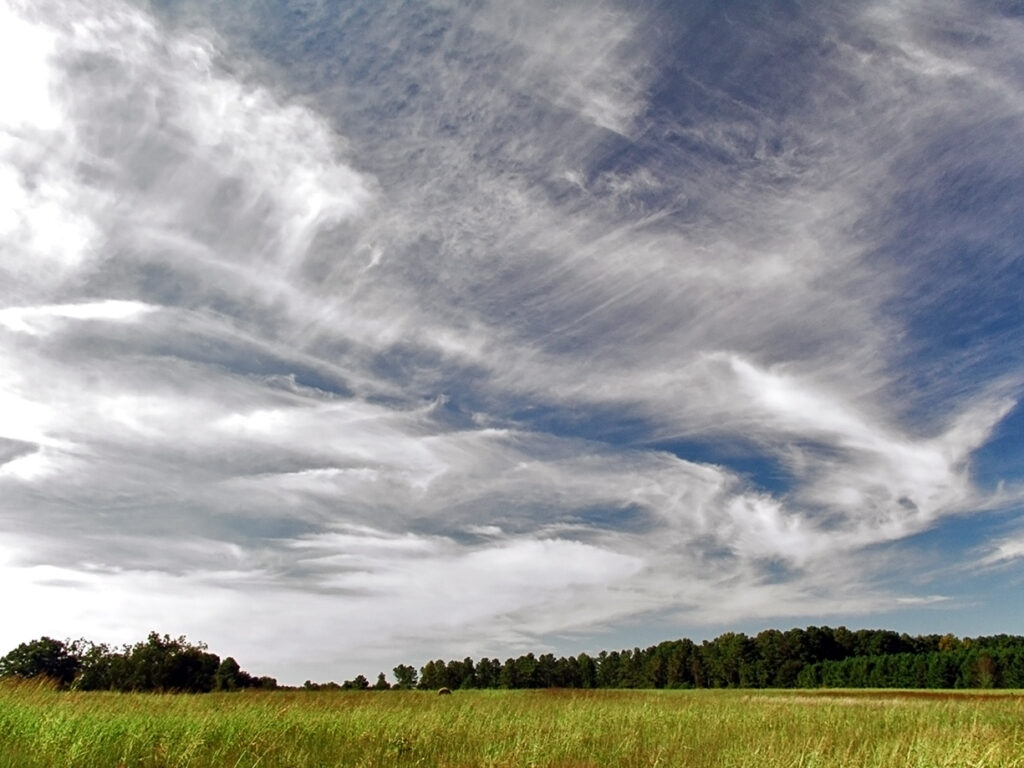
Above: Wispy cirrus clouds. Photo by PiccoloNamek, CC by SA 3.0
“The idea is that you would seed the Arctic when the sun angle is low in the sky, during the winter and fall,” Mitchell says. “Then, when the sun angle reaches a certain threshold, you would switch to seeding in the southern hemisphere, where it’s fall, and repeat this process.” Targeting the polar regions “produces the most bang for your buck,” Mitchell says, because these are the regions most affected by global warming. The more the polar regions heat up and their sea ice melts, the more global warming increases from the loss of ice’s natural ability to reflect solar energy back into space.
The proposal is far from being ready for implementation, as it would require a massive commitment of time and money from societies around the world. Clouds in the polar regions would need to be seeded continuously during the darkest months, using airplanes or drones to distribute the dust particles to targeted regions. This method also doesn’t address the problem of growing amounts of carbon dioxide in the Earth’s oceans, which makes the water more acidic and creates challenges for sea life. Despite these obstacles, Mitchell says that recent scientific and technological advances have enabled him to understand the potential for CCT better than ever.
“Using this satellite known as CALIPSO, we can see a vertical distribution of cirrus clouds in the Arctic. For the first time, we’ve been able to retrieve ice particle concentration and ice mass content, as well as the average size of ice particles,” he says. “With these three things, we can evaluate the ice nucleation process that would allow CCT to be effective.”
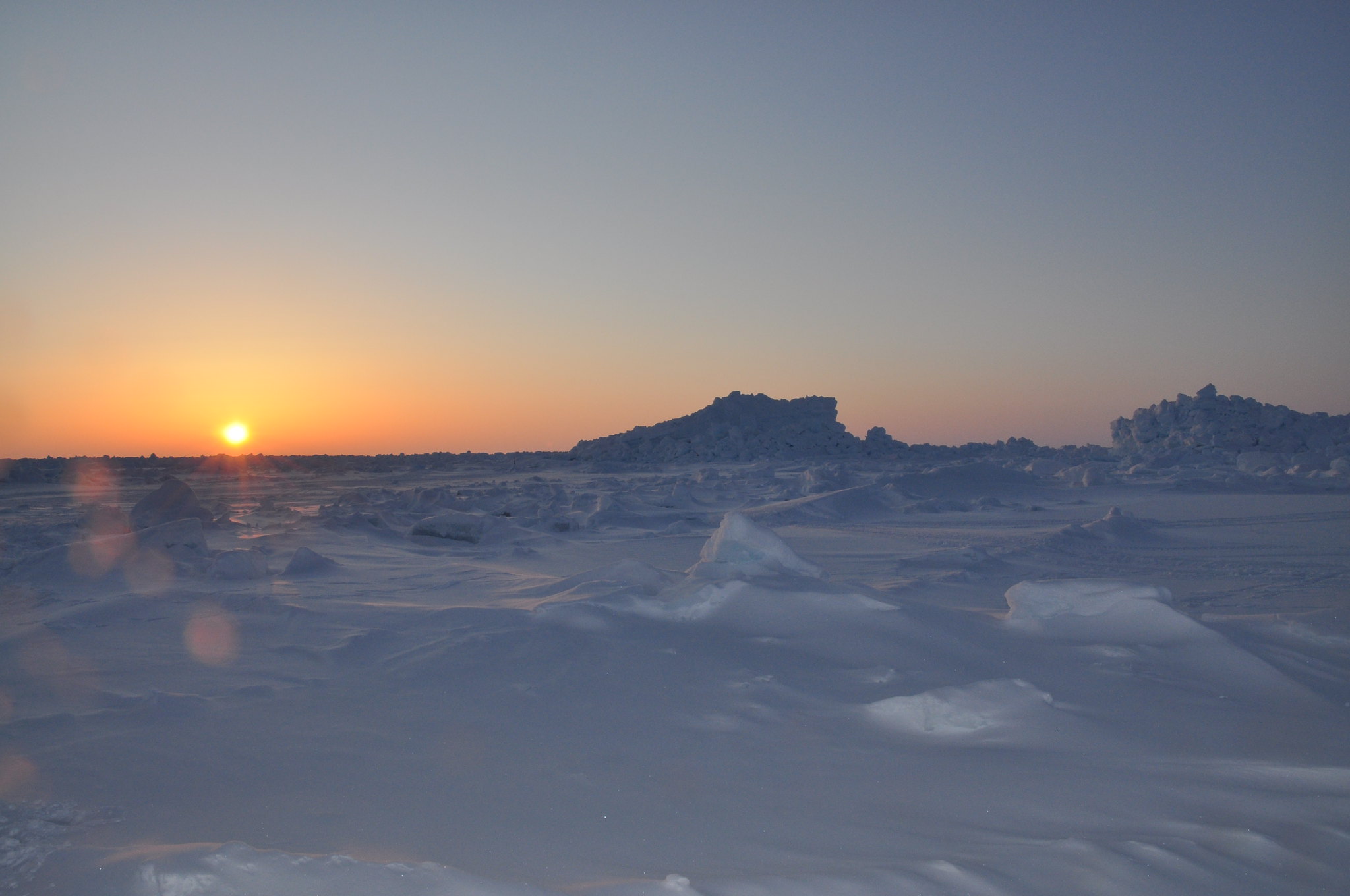
Above: The low sun angle in the Arctic during the fall season.
Credit: Chris Linder Photography
This information can then be plugged into global climate models, which are used to simulate the regional and global effects of climate change. However, like all simulations, their utility requires accurate representations of the factors impacting the scenario in question (much like the quality of each ingredient will influence the outcome of a recipe). The climate is such a fantastically complex system that there are still many questions about the details of ice particle formation and growth in the atmosphere, particularly with cirrus clouds.
“By utilizing the new CALIPSO satellite findings by our group, we plan to improve the representation of cirrus cloud ice nucleation in a global climate model,” says Ehsan Erfani, Ph.D., assistant research professor of cloud microphysics at DRI and member of the research team.
Cirrus cloud-thinning doesn’t have long-lasting effects the way that other proposed climate-intervention techniques, like stratospheric sulfur injection, would. If unforeseen issues arose, scientists could simply stop seeding the clouds. “Unlike greenhouse gases that stay in the atmosphere for hundreds of years, cloud-seeding doesn’t have lingering impacts,” Mitchell says.
“Reducing greenhouse gas emissions is still the number one most important thing to do,” he continues. “But a lot of people have a misunderstanding, because even if we get to zero carbon emissions now, that won’t cool the planet. It will just keep things from getting worse.”
The risks of large-scale geoengineering techniques should not be underestimated, as there are many unknown variables and impacts that global climate models are unable to predict. But this is exactly why this research is needed, Mitchell and others claim. There is a need to determine if there are credible approaches that offer a net positive impact to prevent future decision-makers (who may become more desperate for climate impact mitigation over time), from employing uninformed, risky, or ineffectual approaches.
“If we reach a global tipping point where climate change is causing widespread devastation, there could be groups who will turn to these methods in an emergency,” Mitchell says. “If they grab at the first straw they find, we could be in trouble. But if we know something about what the consequences of these intervention methods could be – and the benefits as well – then we’re in a relatively safer situation.”
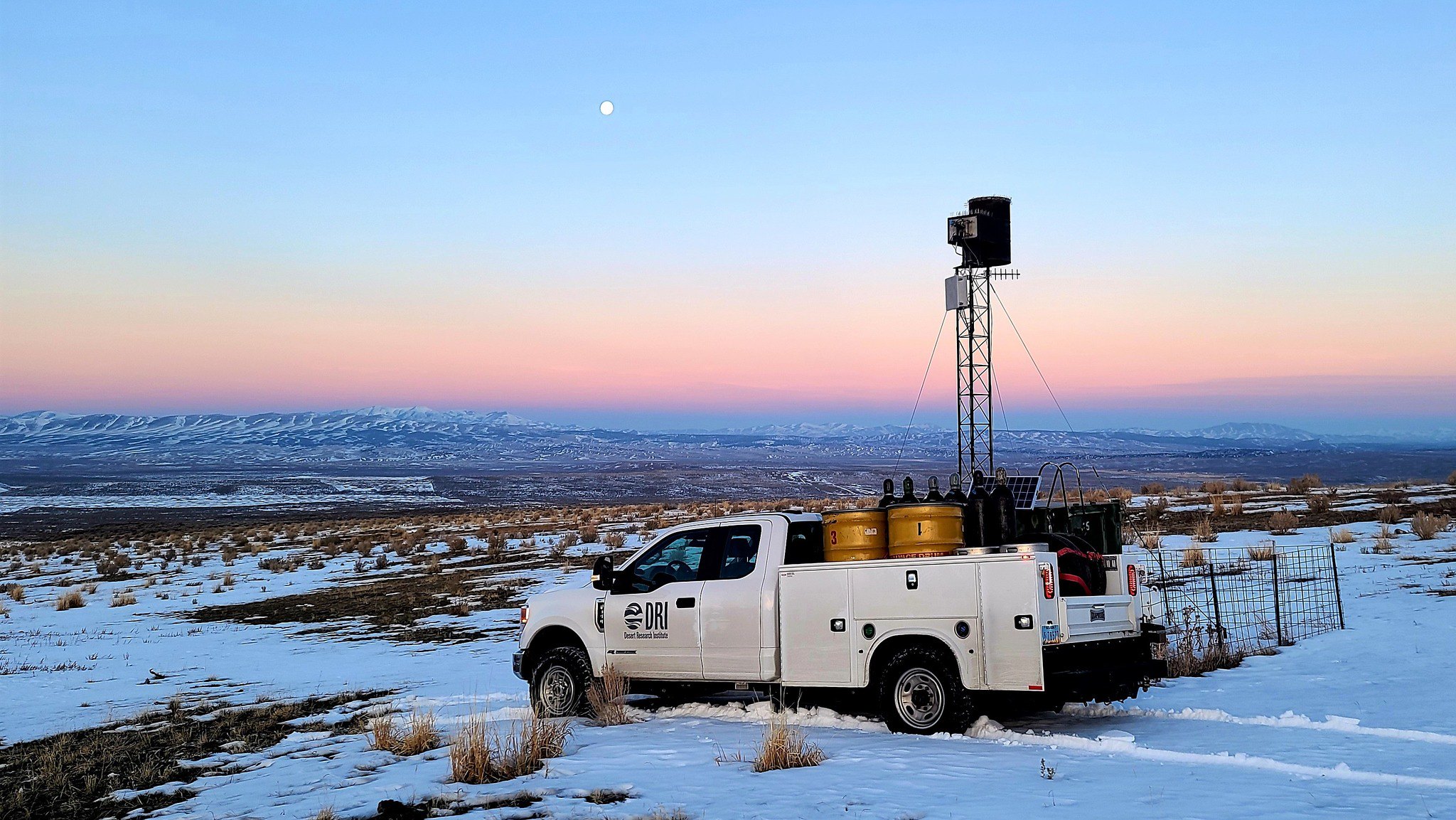
Above: An early morning moonset at DRI’s cloud-seeding field site near the Ruby Mountains. Credit: Jesse Juchtzer/DRI
Using cloud-seeding to protect the solar-reflecting power of snow
The research team is also examining the potential for cloud-seeding to protect mountain snowpacks, which are a critical source of fresh water across the Western U.S. White snow has a natural ability to reflect the sun’s energy, providing a modest cooling to local climates and delaying snowmelt. Although cloud-seeding is already commonly used to enhance snowfall, adding to overall water availability, this new research seeks to better understand ways that cloud-seeding can deposit fresh, white snow on top of snowpacks that have been dusted with grit from smoke and soot. Darker materials, including charcoal from past wildfires, can act like a black sweater on the snow, enhancing the melting effect of sunny days. An extra layer of white snow could help protect the reflective capacity of the snowpack, postponing snowmelt and protecting water storage capacity. DRI research has shown that when snowpacks melt quickly due to winter and spring heatwaves, the reduced water availability during the driest months of the year exacerbates drought impacts and can increase the risk of wildfires.
“DRI has studied and utilized cloud-seeding techniques for more than 50 years, so it only makes sense for us to use our expertise to examine ways that it could help mitigate local impacts that may be worsening due to climate change,” says Naresh Kumar, Ph.D., executive director of atmospheric sciences at DRI and one of the project’s lead researchers.
As with the cirrus-cloud thinning research, this study will use computer simulations to assess how effective this method could be, as well as the conditions for maximizing its potential. The research team of cloud physicists and climate modelers is also deploying remote weather stations in mountain regions around the Western U.S. to improve weather forecasting.

Above: A bird’s eye view of Las Vegas at night. Miles of asphalt and building roofs absorb heat from the sun and heat up urban communities.
Reducing heat in urban communities
Cities across the world experience enhanced warming because of the way manmade surfaces, like asphalt, pavement, and buildings, absorb and radiate heat. Known as the “urban heat-island effect,” this warming is particularly acute in southwestern cities such as Las Vegas and Phoenix, creating hazardous conditions for everyone, but particularly for outdoor workers. Altering urban surfaces to reflect, rather than absorb, the sun’s energy could help reduce local temperatures.
A subset of the research team led by DRI climatologist John Mejia, Ph.D., is assessing the ability of lighter-colored, reflective rooftops and pavement to cool urban communities, as well as how this cooling could bring wider benefits. Conventional roofs can reach temperatures of 150°F on a summer day, trapping and radiating heat into the home beneath. The cumulative effect of heated roofs can also increase air temperatures in the community. According to the U.S. Department of Energy, reflective roofs can stay 50°F cooler under the same conditions.
Considering how our architecture and planning impacts our exposure to heat can bring broader benefits. Cooler temperatures could reduce energy use by lowering demand for air conditioning, one of the largest sources of summer electricity use. This applies not only to municipal energy systems, but also to vehicles which burn more fuel when running A.C., further contributing to the greenhouse gas emissions of the region and creating a cycle of warming. The research team will also examine how cooling urban communities with reflective surfaces impacts urban forestation efforts, a practice which can help provide shade for city dwellers, but which has tradeoffs with ongoing water conservation efforts.
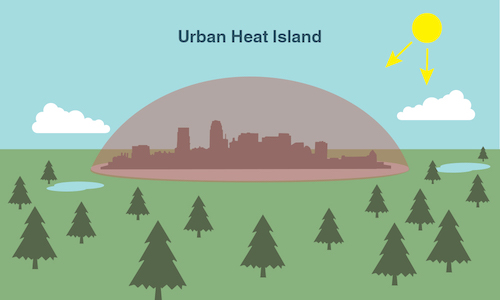
Above: An illustration of the urban heat island effect. Credit: NASA/JPL
Moving Forward Under Uncertainty
DRI’s research will help answer questions about how each of these climate interventions could work, helping to prepare humanity for an uncertain future.
“All three of these research areas are interlinked,” Kumar says, “because they all deal with climate intervention. Cirrus cloud-thinning is on a more global scale, whereas cloud-seeding and heat island impacts are very local, but they are interrelated. Because there are a lot of things that are still unknown about these potential climate mitigation strategies, we wanted to combine them into a single project to investigate some of the remaining questions.”
Of course, striving to understand the physics of how climate intervention techniques could work is only one part of a much larger and more complex conversation. Even once researchers feel confident that they understand the potential benefits and risks, humanity would need to address thorny questions about ethics and authority. When it comes to concerns of global importance, who has decision-making power, and how do we ensure that this group has accountability to humanity at large? Science can act as one guiding light on the path to addressing climate change, but these questions will require cooperation and partnership on an unprecedented scale.
——————————–
This research is supported by funding from NOAA, through the U.S. Department of Commerce, grant number NA22OAR4690640.
